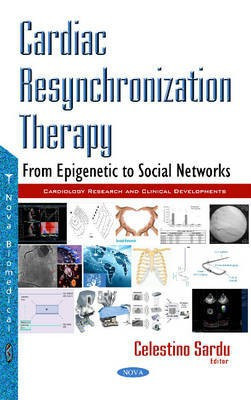Cardiac Resynchronization Therapy(English, Hardcover, unknown)
Quick Overview
Product Price Comparison
Over the last few decades, cardiac resynchronization therapy (CRT) has been introduced as a choice treatment for heart failure (HF) patients, refractory to maximal drug therapy and left bundle branch block. Advanced heart failure is related to cardiac fibrosis, hypertrophy and apoptosis, and CRT in 30% of patients is not able to ameliorate cardiac performance and mechanical efficiency. This clear loss of effect (CRT failure) is frustrating and leaves HF patients in a steady and/or advanced, uncontrolled worsening state of clinical symptoms and NYHA class. Several hypotheses have been conducted to explain this loss of effect: investigating epigenetic (microRNAs activation pattern), echocardiography (mechanical cardiac dyssynchrony assessment), arrhythmias (atrial fibrillating patients), left ventricle lead positioning (target wall and vessel) and pacing modalities (bipolar vs multipolar), and epicardial approaches (cardiac surgery) to reach the target ventricular wall. The selection criteria, the implant technique and CRT monitoring are relevant aspects of the CRT world in all its complexity. The necessity to follow and characterize CRT recipients (responders vs non responders), and the routine follow up with recent advancements in technology (telemonitoring) may be an instrument to improve CRT response entity and clinical outcomes. The creation of a social platform (social networks) may represent a necessary and evolutionary step to share individual experiences and to exchange ideas about CRT recipients and experienced operators. The opportunity to improve CRT responders percentage may represent a gold standard and an attractive prospective in failing heart patients CRT recipients. In this book, we have investigated these aspects, hoping to provide to the reader the right reading tools in the CRT world. Our message remains: To help people suffering from cardiovascular diseases and to live better with their disease.


